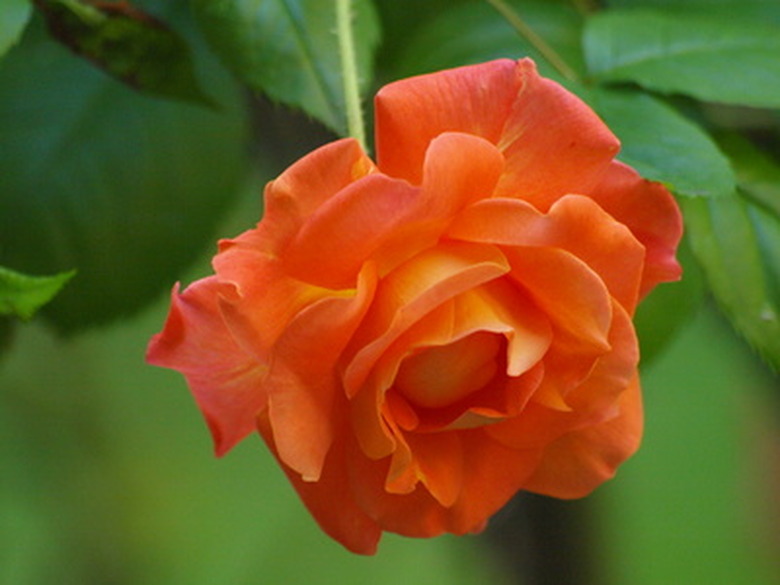The Life Cycle Of A Rose Plant
Roses are perennial plants, meaning that they last for more than one growing season. Like other plants, roses have two distinct reproductive generations, each leading into the other. Known as the alteration of generations, in reproduction of the rose flower, separate diploid organisms (which have two copies of each chromosome; the sporophyte generation) and haploid organisms (which have one copy; the gametophyte generation) occur at different times in the life cycle of the rose.
TL;DR (Too Long; Didn't Read)
The life cycle of the rose has alternating generations of plants with different numbers of chromosomes.
Sporophyte Generation
Sporophyte Generation
The sporophyte generation is the diploid stage in the life cycle of a rose plant. The sporophyte, meaning "spore plant" in Greek, bears reproductive cells in the rose reproductive system. Once a rose seed develops after fertilization, it is encased in a dark, red fruit to attract animal dispersers, which spread the seeds. If conditions are favorable, the seed will germinate and a period of growth and development will follow. During the spring, a rose flower will appear, signaling the reproductive stage of the rose plant's life cycle.
Seed and Fruit
Seed and Fruit
The rose sporophyte generation begins as a diploid zygote, the result of fertilization, or the fusion of egg and sperm. This reproductive structure is protected by a seed coat and contains an embryonic plant and a supply of food. The rose seed is enclosed within a dark red fruit, which usually appears in the fall, to attract potential animal dispersers. The embryo develops a root, shoot and two cotyledons, which help digest, absorb and transfer food from the endosperm to the embryo.
Rose Flowers
Rose Flowers
Roses are complete flowers, consisting of a central axis on which four successive sets of modified leaves are attached. These include sepals, which surround and protect the bud; petals, which attract potential pollinators; stamens; and carpels. The stamen is the male reproductive structure of a flower, consisting of a filament and an anther, in which pollen grains develop. The carpal is the female reproductive structure of a flower, composed of an ovary hidden in the base of the flower, with a long style protruding out, ending in a sticky stigma. Mother cells developed within the flower divide via meiosis to produce two types of haploid, asexual spores: microspores in the anthers and megaspores within the ovary.
Gametophyte Generation
Gametophyte Generation
The gametophyte generation is the multicellular haploid stage in the life cycle of a rose plant. Once the rose sporophyte undergoes meiosis and produces haploid spores, the spores undergo mitosis and differentiation. The male gametophyte is a tough, watertight pollen grain, which must drift on the wind or be carried by an animal to another rose's embryo sac, the female gametophyte.
Pollination and Fertilization
Pollination and Fertilization
Once a pollen grain reaches the sticky stigma of the carpal, the process of fertilization begins. If fertilization of the rose gametophytes is successful, the result will be a diploid zygote, an endosperm food reserve, and a seed coat. This new diploid sporophyte generation may lie dormant for months or years, waiting for favorable conditions to germinate. Rose seeds require warmth and moisture for growth and development.
Cite This Article
MLA
SophiaK, . "The Life Cycle Of A Rose Plant" sciencing.com, https://www.sciencing.com/life-cycle-rose-plant-6725023/. 22 November 2019.
APA
SophiaK, . (2019, November 22). The Life Cycle Of A Rose Plant. sciencing.com. Retrieved from https://www.sciencing.com/life-cycle-rose-plant-6725023/
Chicago
SophiaK, . The Life Cycle Of A Rose Plant last modified March 24, 2022. https://www.sciencing.com/life-cycle-rose-plant-6725023/
